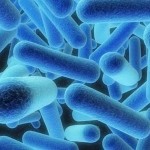Carbon Monoxide in your air
Carbon monoxide is one of the most acutely toxic indoor air contaminants. It is a colorless and odorless gas that is a byproduct of the incomplete combustion of fossil fuels. The most common sources of workplace and residential carbon monoxide are automobile exhaust, defective central heating furnaces, space heaters using […]
Asbestos in your air
The Canadian government has set standards for acceptable levels of asbestos fibers in indoor air. A dangerous carcinogen, asbestos has the potential, when airborne, to cause serious health concerns including lung cancer and mesothelioma. Many common building materials used before 1975 contain asbestos. Some of these “asbestos containing materials” are […]
Volatile Organic Compounds in your air
Voc’s are emitted as gases, or “off-gases” from certain solids or liquids. Voc’s include a wide variety of chemicals, some of which may have both short and long term health effects on individuals exposed. VOC concentrations are consistently higher indoors than outdoors (up to ten times higher). There are a […]
Legionella in your air
Legionella in Your Air Many types of bacteria exist which can impact our indoor air quality. Legionella is one such bacterium which could result in serious health issues to exposed individuals. Legionellosis, or Legionnaire’s Disease, is caused by the waterborne Legionella bacterium that grows best in slow moving or still, […]
Mold in your air
Mold is the leading cause of allergy symptoms which could result in serious health conditions such as emphysema, asthma and even death. Symptoms can develop, and health concerns can arise, even when mold spores are inhaled in small amounts. Mold is opportunistic. It will take advantage of every opportunity to […]



Follow Us!